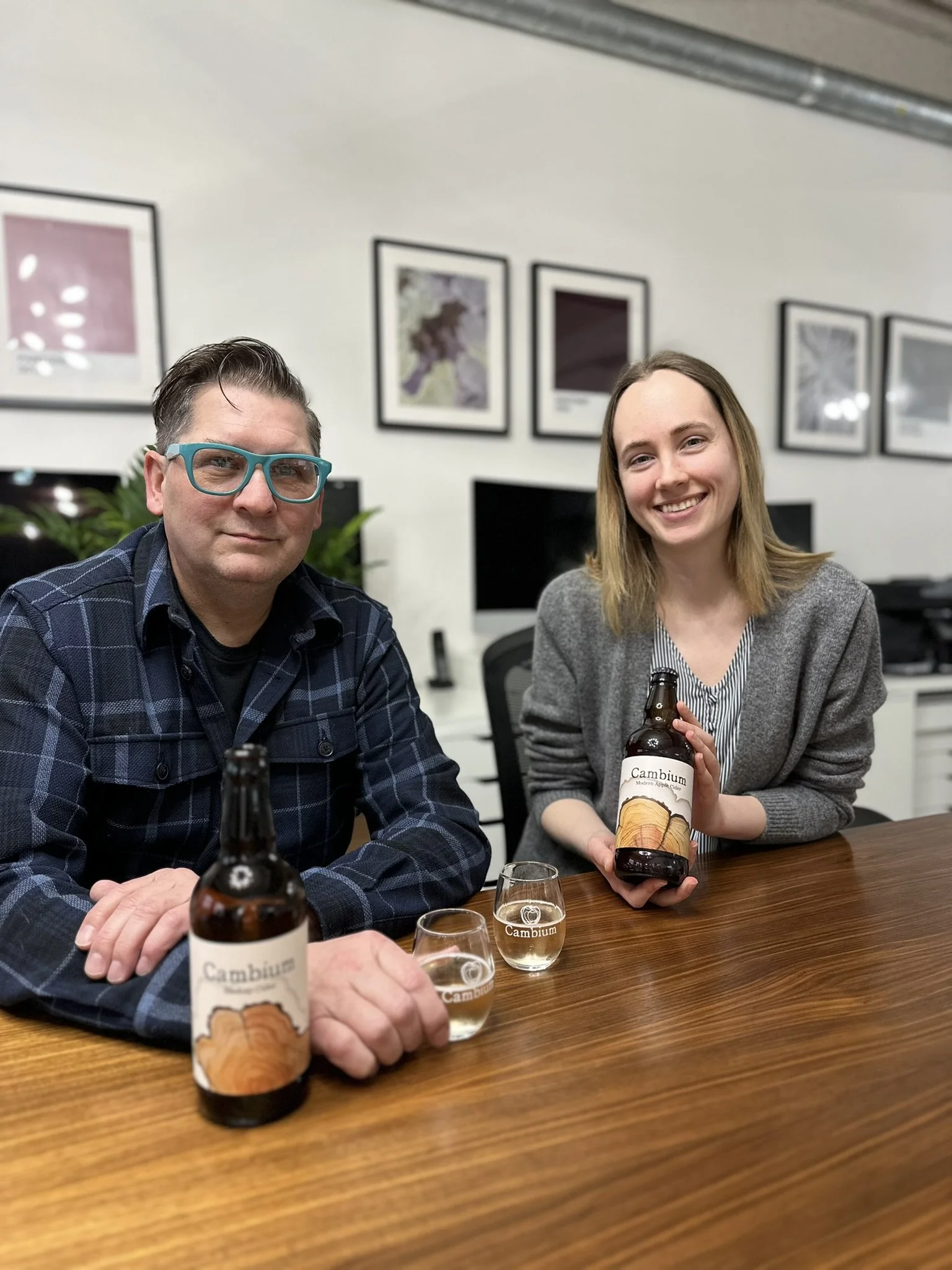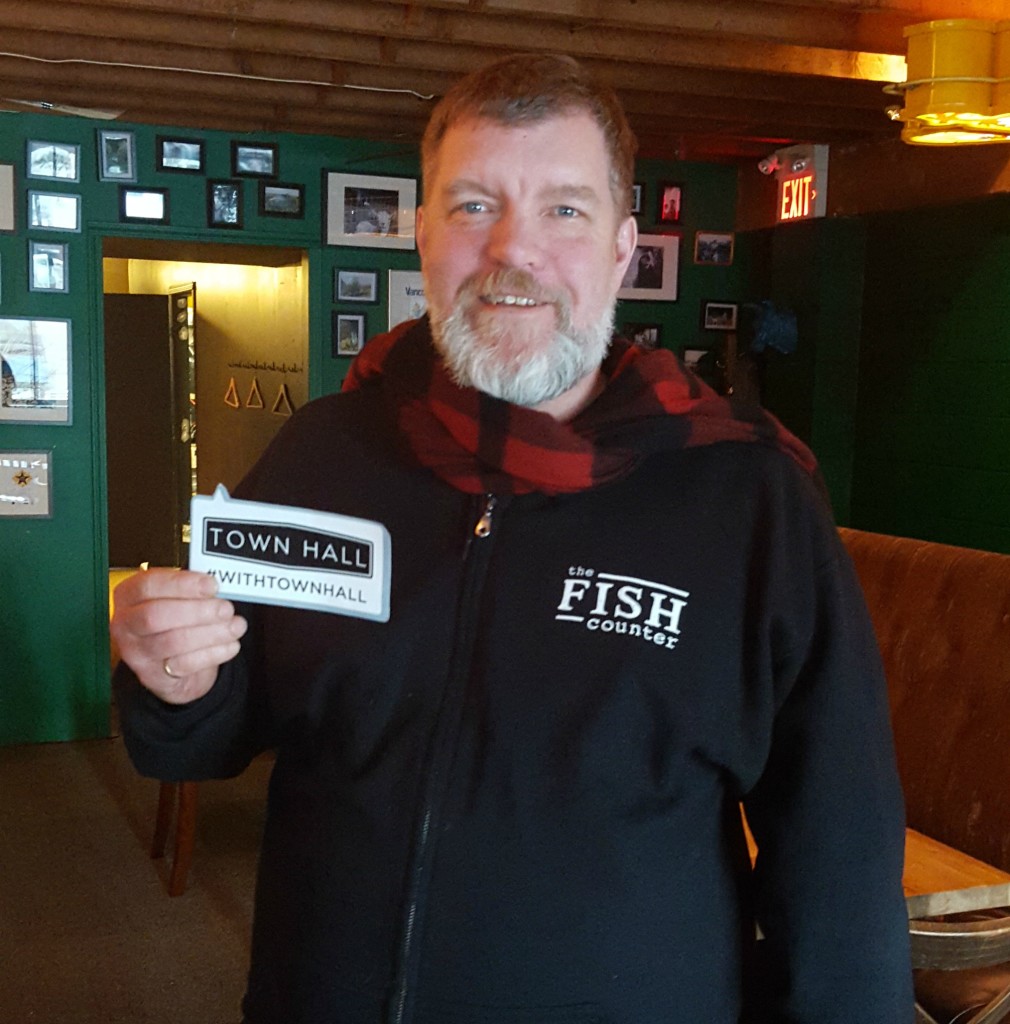By Leeann Froese
Sometimes in my work I get to do some pretty cool things.

I feel truly lucky that I get to go to lots of different wine tastings, meet some very interesting personalities, eat some incredible food, and get exposed to a lot of things that some other people might not unless they were in our industry. I would say that my experience last week would be no exception, when I got to go on a ride along on a spot prawn fishing boat.
We do media relations for the Chefs' Table Society of British Columbia, and as a result of this, for the past month we have been working very closely with spot prawn fisherman (the Spot Prawn Festival is a Chefs' Table Society initiative).
Michelle da Silva, a staff reporter for the Georgia Strait, was writing a story about Spot Prawns because she felt that her readers would like to know a little bit more about these little delicacies, how they are harvested and where they come from. So I, and Amber Sessions from Tourism Vancouver, joined in for a ride along.

What a great learning opportunity it was to see the fisherman at work. We were on the Organic Ocean, which is run by Steve Johanson and Frank Keitsch (and co-owned by Dane Chauvel, who was not with us).
Peter Chauvel, Dane's son, was with them. Peter is a university student who has been on fishing trips since he was a toddler. Today, Peter spends his summers working on the boats in between his semesters at university.
The location of the traps is a well-kept secret, in order to keep things commercially sensitive.

What I can share is that they have different fishing grounds up and down the west coast, and we were lucky enough to see them pull out a few strings of traps and then reset them.
I was mentally prepared to be put to work, but in the end, I just got to watch and enjoy what had to be one of the most beautiful mornings on the water all season.
The three fishermen have a very well orchestrated system. One person uses a winch and hoists in the traps, the second person empties them on a custom-built table, and passes the net to the third person, who resets the bait and gets the traps ready to drop back into the water, once all the catch has been brought up.


What was interesting to learn is that before any of the spot prawns are caught, a section of the boat hull is filled with very cold ocean water which is then further cooled on board. This on-board tank utilizes a computerized chilling system to circulate sea water drawn from the ocean floor. When the spot prawns are caught they are put into this icy cold water to stay alive up until the time that they are sold at False Creek Fisherman's Wharf or transported to restaurants. It does not get any fresher than this.
I did not for one minute think that Spot Prawn fishing would fall into the category of an easy job, but I think you, dear readers will appreciate these delicious little critters that much more after hearing how hard the fishermen work to get them to you.
The work was physically demanding, as the traps after coming up on a hoist are heavy: filled with catch, and wet. Also this is a wet job – waterproof wear is required as there is a lot of water splashing off the line and traps, and there is plenty of fast, physical action as the nets get emptied.


As each trap is emptied a very low tech tool is employed – a plastic dust pan. This flat scoop is perfect for picking up the spot prawns after they are dumped out of the traps, but first the prawns must be sorted.


At this time the unwelcome are also removed. In the traps sometimes there are other sea creatures, noted as by-catch, which can include other shrimp, crabs, jellyfish and other miscellany of fish of varying sizes. I got to check out and then throw back a Squat Lobster - which I had never heard of or seen before!

I was hoping for an octopus but none were accidentally caught that day. All by-catch is thrown back into the ocean so they can live another day. And the spot prawns have to be the right size. Any that are too small or if there are any with eggs, they are thrown back as well "for next year's catch".
A real treat: from the first trap emptied, Steve gave us each a spot prawn "breakfast" he says. I had never eaten a raw spot prawn before, and Michelle was a little unnerved as hers was "still twitching". Nevertheless, we peeled and ate these fresh-from the sea prawns. They were somewhat sweet with nice firm flesh and absolutely delicious.

Once the nets were hoisted by Frank and emptied by Steve, Pete would take the nets make sure that no jellyfish or anything else is stuck inside and then he re-sets the bait, which is a special smelly fishy mixture. Then the nets are stacked up and prepared to be dropped back into the water for the next day's catch.


The spot prawn season lasts six to eight weeks, and every day it is this same set of physically demanding tasks, seven days a week, rain or shine.

Want to see Michelle’s story of our experience?
About Spot Prawns
Wild BC spot prawns are a delicacy known around the world for their sweet, delicate flavour and firm texture. They are most recognizable for their reddish brown colour, which turns bright pink when cooked, defining white spots on their tail and white horizontal bars on the carapace.
BC spot prawns are the largest of the seven commercial species of shrimp found on the west coast of Canada. They vary greatly in size, with some larger females exceeding 23 cm in total length. Prawns are hermaphrodites: for the first two years of their lives they are males, and then they change to females. Typically, spot prawns live a total of four years.
In BC, approximately 2,450 metric tonnes are harvested annually, with about 65% of the harvest coming from the waters between Vancouver Island and the mainland.
BC spot prawns are available live during the harvest season, which usually starts in May and lasts anywhere from six to eight weeks. Prawn fishermen spread baited traps along the rocky ocean floor at depths ranging from 40 to 100 metres. This method has minimal impact on ocean habitat and very low levels of by-catch of other species.
BC spot prawns are very popular in Japan and the rest of Asia, with over 90% of BC’s commercial catch consumed there. Most of the prawns are frozen at sea by fishermen, and then packed and exported across the Pacific. The remaining few, however, like what was harvest by Organic Ocean on our ride along, are available to be enjoyed fresh in local BC restaurants and kitchens during the fishing season!
Spot prawn stocks are carefully and sustainably managed to ensure that they remain available to enjoy for many years to come, including:
- Limiting the number of vessels that can commercially harvest spot prawns
- Limiting the number of traps that can be used
- Returning females with eggs live to the ocean
- Monitoring the spot prawn population and closing the fishery when prawn stocks approach a pre-determined level
Learn more about the Spot Prawn Festival and link to more information on Spot Prawns here.
















